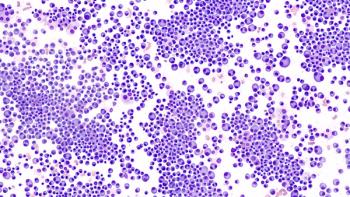
Pharmacy Practice in Focus: Health Systems
- March 2013
- Volume 2
- Issue 2
Chemotherapy and Obesity
When giving antineoplastics to obese and morbidly obese patients, clinicians must be careful not to under- or overdose.
Case
A 24-year-old morbidly obese woman (187 kg, body mass index 66.4, kg/m
2
) with relapsed/refractory acute promyelocytic leukemia (APML) is admitted for reinduction chemotherapy with arsenic trioxide (ATO). The current dosing recommendation for ATO in APML is 0.15 mg/kg. Should she be dosed using her full body weight?
Answer
The majority of antineoplastics are dosed using body surface area (m
2
) or on a milligram per kilogram (mg/kg) basis. Recent recommendations from the American Society of Clinical Oncology (ASCO) advocate using actual body weight when dosing chemotherapy.
1
The doses used when treating obese and morbidly obese patients using full body weight calculations are substantially higher than the doses used in randomized clinical trials. Historically, clinicians have hesitated to use doses based on actual body weight, secondary to concerns about increased toxicity. In the ASCO recommendations, this risk of increased toxicity in the overweight oncologic population was explicitly addressed by studies of patients with various solid malignancies. The data demonstrated that obese patients experience the same incidence of nonhematologic toxicity. Surprisingly, in some cases obese patients experienced less hematologic toxicity than their healthyweight counterparts.
1-3
Additional questions remain regarding the effect underdosing has on the efficacy of chemotherapy regimens. Despite limited data, studies in the breast cancer population have shown that overweight and obese women have poorer prognoses than women with healthy weights. The exact pathophysiology of these poorer outcomes has yet to be elucidated; however, underdosing is considered to be one reason. Griggs et al demonstrated that there was a significant difference in the percentage of underdosing of chemotherapy in obese and overweight women. The study authors suggest that full weightbased doses of adjuvant chemotherapy would likely improve clinical outcomes.3 Similar analysis of underdosing in obese patients with hematologic malignancy are lacking and encouraged.
The use of single-agent ATO is well established for reinduction therapy in relapsed APML.4 The data supporting the recommended dose of ATO do not address dosing in obese patients. Despite the reservations clinicians may have, antineoplastics, including ATO, should be dosed using actual body weight in obese patients. Treatment plans employing dosing strategies based on ideal body weight, adjusted body weight, or capped doses should be avoided. For this patient, ATO should be dosed at 28 mg (0.15 mg/kg). Any dose adjustments for toxicity should be made in the same manner as dose adjustments would be made in the nonobese patient.
Jennifer Neal, PharmD, is an assistant professor of pharmacy at Virginia Commonwealth University School of Pharmacy. Jeremy Sen, PharmD, is a PGY-2 Oncology Pharmacy Resident at the University of Virginia Medical School.
References:
- Griggs JJ, Mangu PB, Anderson H, et al. Appropriate chemotherapy dosing for obese adult patients with cancer: American Society of Clinical Oncology clinical practice guidelines. J Clin Oncol. 2012;30:1553-1561.
- Rosner GL, Hargis JB, Hollis DR, et al. Relationship between toxicity and obesity in women receiving adjuvant chemotherapy for breast cancer: results from Cancer and Leukemia Group B Study 8541. J Clin Oncol. 1996;14:3000-3008.
- Griggs JJ, Melony MES, GH Lyman. Undertreatment of obese women receiving breast cancer chemotherapy. Arch Intern Med. 2005;165:1267-1273.
- O’Donnell MR, Abboud CN, Altman JK, et al. National Comprehensive Cancer Network clinical practice guidelines in oncology, Acute Myeloid Leukemia. Version 2.2012.
Articles in this issue
over 12 years ago
Just One More Patientover 12 years ago
Glucarpidase (Voraxaze)over 12 years ago
Tuberculosis: The Consuming Plagueover 12 years ago
Alzheimer's Disease: Maximizing Cognition and FunctionNewsletter
Stay informed on drug updates, treatment guidelines, and pharmacy practice trends—subscribe to Pharmacy Times for weekly clinical insights.



















































































































































































































